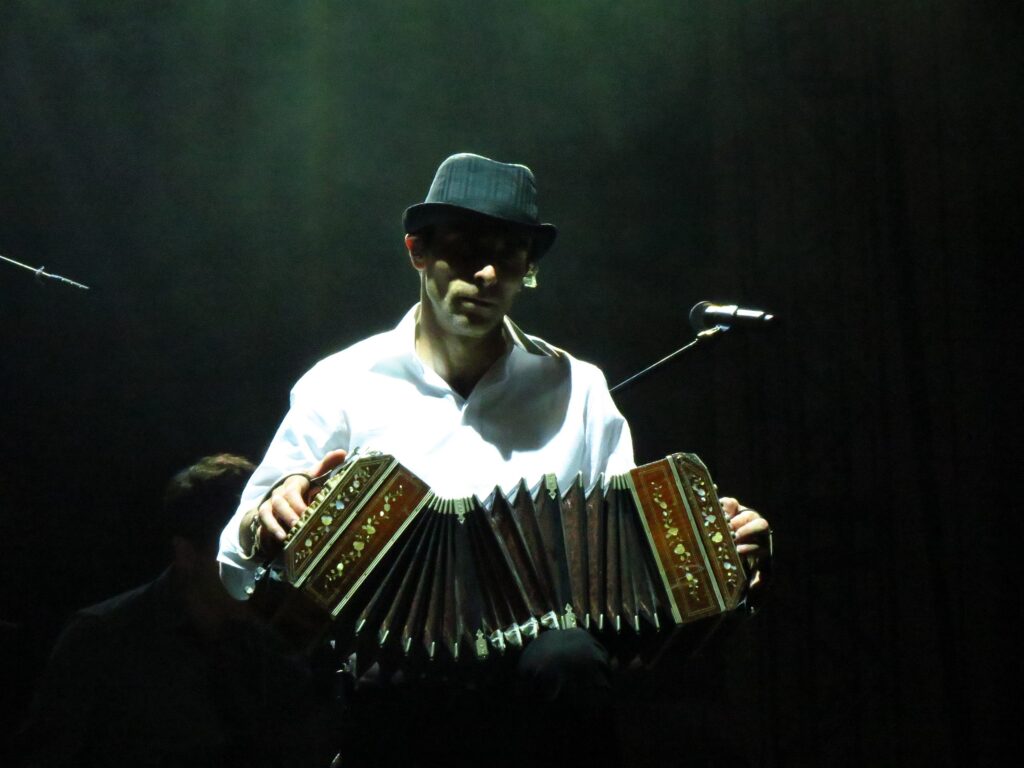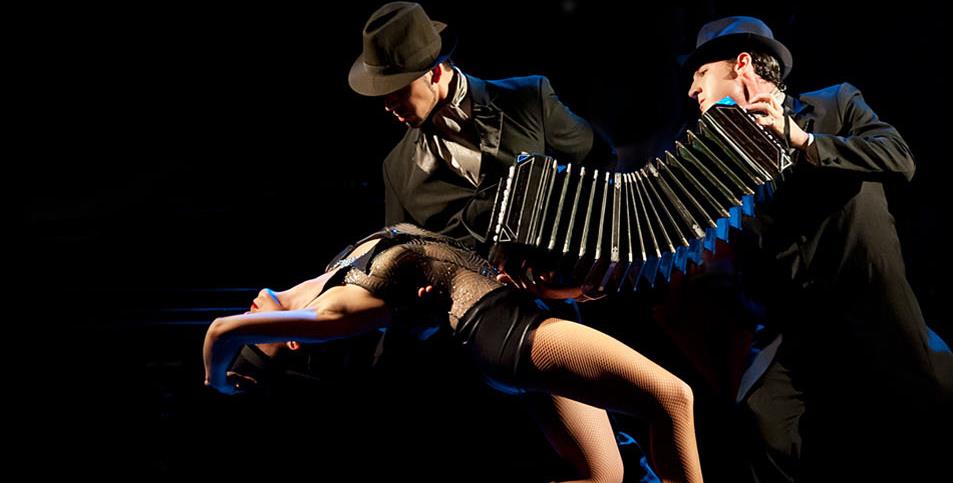Tango with a Club Beat
Electrotango
Tango may be timeless, it is also on the move with its fringes drifting away from melancholy to embrace modernity. Connecting with a younger crowd inhabiting the club scene rather than the ballroom, Electrotango is now approaching the mainstream. A fusion of the classical tango argentino with pulsating electronic beats and, at times, topped with a sprinkling of smooth jazz notes,
Electrotango was showcased at the 2014 Glastonbury Festival – one of Europe’s largest outdoor music events – when the eight-member Argentinian / Uruguayan ensemble Bajofondo, billed as South American trip-hop, took to the ‘Other Stage’ and managed to promptly draw a significant crowd away from the main event.

Music with purpose, style, and – most of all – punch: Bajofondo’s interpretation of Electrotango usually gets noticed. Its latest hit track Pa’ Bailar received intensive radio play in the United States after it was prominently featured earlier this year in the CBS television series The Good Wife. As the series’ star Alicia Florrick (Julianna Margulies) strutted down a Chicago sidewalk to the Bajofondo beat after yet another victory in court, the group saw online sales of its albums skyrocket.
Electrotango’s ascendancy received a gentle push from the members Kraftwerk, the German pioneers of electronic music who were much awed by the Tanghetto cover of their hit Computer Love. Tanghetto was formed in 2002 by songwriter Max Masri who almost single-handedly redefined Argentina’s national genre by adding electronic drums, samplers, and synthesisers to the standard tango instrument fare of bandoneon, violoncello, and acoustic piano and guitar.
The release of Tanghetto’s first album Emigrante (electrotango) in 2003 coincided with yet another of Argentina’s interminable series of economic depressions and captured the moment with finely composed lamentations on the sorry state of the nation and the departure of almost an entire generation of talented young people to foreign – and more prosperous – shores. Promptly, parallels were identified between Tanghetto and the UK’s Massive Attack in the ‘smoky textures and delicate piano lines’ that the Los Angeles Times’s music critic keenly detected.

Emigrante was nominated, but failed to win, in two categories of the Latin Grammys. Less concerned with convention, the judges of the Premio Gardel – the Argentinian music industry awards – handed the band two wins. Now touring Latin America, with occasional escapades to Europe and North America, Tanghetto has reached a cult-like status as the fearless pioneers of electrotango going as far as retouching – or better, reassembling – the almost sacrosanct songs of all-time tango great Astor Piazzolla. They’re getting away with it too.
As with traditional tango, Paris – and not necessarily Buenos Aires – has been instrumental in the development of electrotango. It was in the French capital the Gotan Project was formed in 1999 around Argentine musician Eduardo Makaroff and a few of his friends. Their 2001 La Revancha del Tango (Tango’s Revenge) album was ‘discovered’ – albeit belatedly – by British DJ Gilles Peterson who featured it on his BBC Radio 1 show in 2004, propelling the Argentinian/French/Swiss band to almost instant fame. That same year, the movie Shall We Dance? – starring Jennifer Lopez alongside Richard Gere – featured a song from the La Revancha del Tango album for its breath-taking dance sequence.

“Everything changed as soon as we decided to apply electronics to tango, producing something that simply had not existed before. While many predicted that by doing so Gotan Project had willingly confined itself to the outer reaches of the music scene, if not its underground, amazingly enough the whole thing just worked and became a huge success without any marketing effort on our part,” remembers Eduardo Makaroff. La Revancha del Tango went on to sell over a million copies: “From messing around with specialist vinyl records for DJs that had a press run of at most a thousand, we all of a sudden found ourselves surrounded by record company executives eager to sign us on.”
Though there is some dispute, often quite acerbic, amongst music critics about the inventors of electrotango, the two most likely candidates – Gotan Project and Bajofondo – couldn’t care less. Band members figure the world offers a large enough stage for both to upset convention. And so it does.
Cover photo: Tango both timeless and modern as demonstrated by the band Electro Tango.


